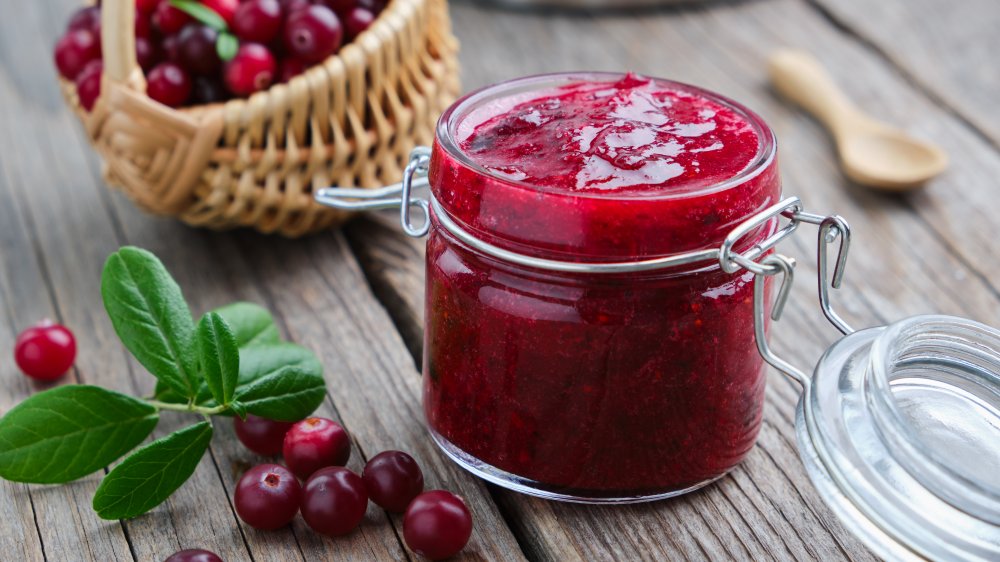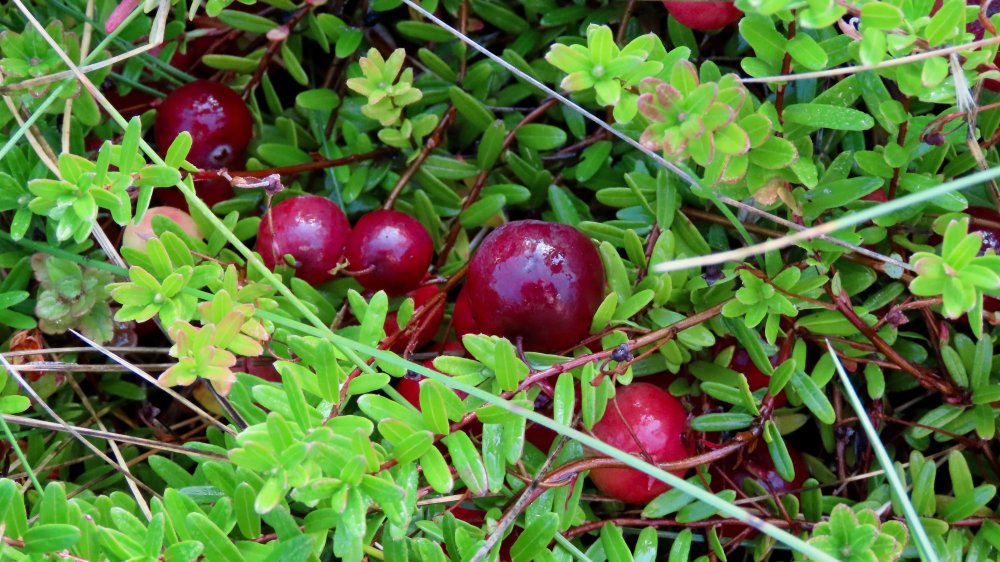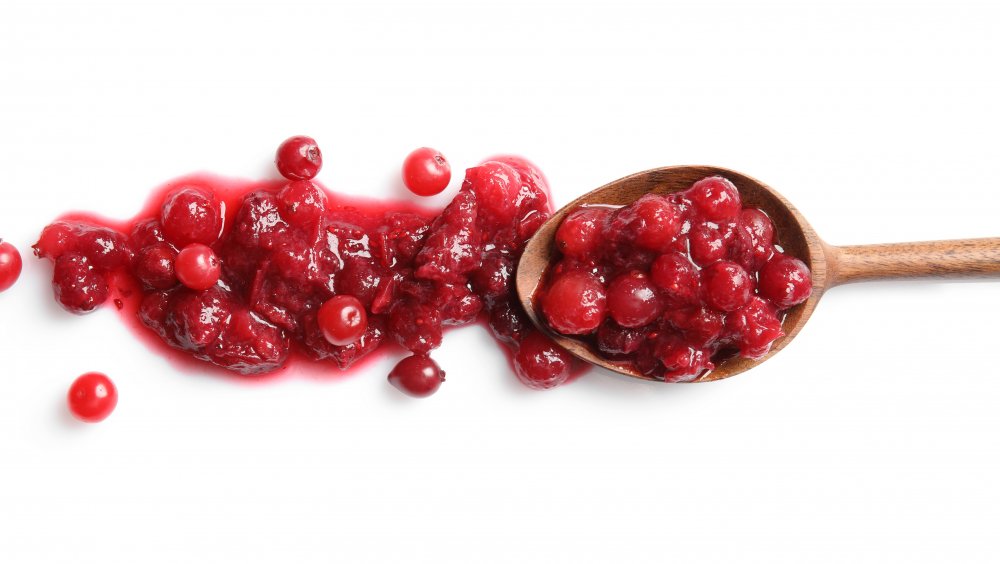A Shortage Of This Important Thanksgiving Ingredient Is Around The Corner
We're less than two months away from the end of 2020, and while we may be just about done with it, it's not quite done with us. Because nothing has been normal this year, we can expect that no holidays we celebrate are going to be the way we've always celebrated them either, and that goes for Thanksgiving too. In addition to maybe not seeing your loved ones, Eat This, Not That! reports that thanks to this year's wacky weather, we may be seeing lower-than-normal supplies of cranberries. That means you might not be able to make or find cranberry sauce, or could have to pay much more than you would expect for this Thanksgiving staple.
Weather is an important factor in getting cranberries to grow properly, because they need specific conditions in order to thrive. The berries grow on vines that are planted in acid peat soil which features layers of sand, peat, gravel, and clay in areas known as "bogs" or "marshes". The berry vines need plenty of fresh water that comes from a system of wetlands, ponds, and ditches to thrive, and these conditions are normally found in the northern parts of the United States, from New Jersey to Washington (via Massachusetts Cranberries).
Drought has impacted 2020's cranberry harvests
Independent cranberry farmers located in Maine say that while their typical annual harvest can bring anywhere between 50 to 80,000 pounds of the fruit, the 2020 harvest will come in at far less than that. Cranberry grower Christine Alexander told The Ellsworth American that "It hasn't been a great growing year. There was frost in June, and that had a negative impact on pollination." Then there was the August heatwave, which Alexander's underground irrigation system couldn't cope with. "It was so hot, when we'd go [to check the plants], the temperature would be over 100 degrees," the farmer said.
The drought was also felt in Massachusetts. There, the Cape Cod Cranberry Growers' Association says its farmers are only expecting a one percent increase in their cranberry crop size, against the 11 percent increase initially predicted by the USDA. Cranberry farmer John Koapcz, said "We've been irrigating, but as the (organization) correctly points out, that's not the same as if we get water out of the sky. Hopefully the rainfall in the next couple of weeks will start to correct that, but it's hard to tell the impact of that until you're almost ready for harvest" (via The Patriot Ledger).
Wisconsin expects a good year for cranberry harvests
Still, there is slightly more optimism over the size of the cranberry harvest in Wisconsin, which saw its production plummet 30 percent last year thanks to cold, wet weather. The farmers there think this year will more than make up for 2019's loss, saying that they expect "an exceptionally good crop" this year.
2020's cranberry harvest does, however, face yet another challenge in the form of COVID-19. Fruit pickers need to stay healthy, because if someone comes down with the coronavirus, the necessary two-week quarantine will seriously eat into the fruit's peak harvest period of about three weeks (via WIZM News). Whether the total harvest can eventually smooth out the uneven edges caused by weather and the pandemic is anyone's guess — this is agriculture after all. Still, it could be a wise decision to snap up a few bags of cranberry fruit if you see them now, just to make sure there is enough to grace your Thanksgiving table when feasting time comes.


